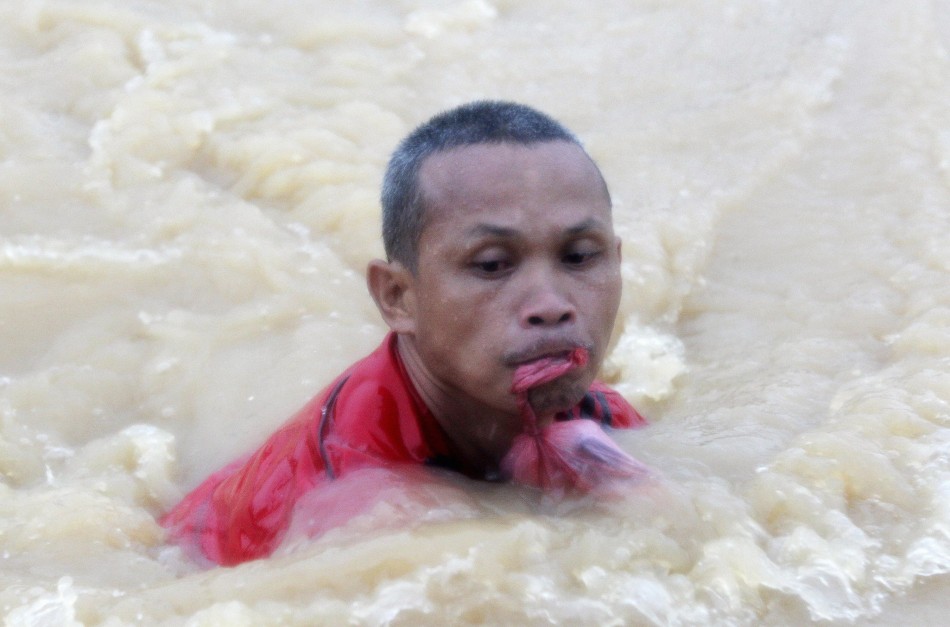Manila Floods Kill 23, Leave 270,000 Homeless [PHOTOS]
Educational institutions and offices across the capital remain closed
The worst floods for three years in the Philippines capital Manila have claimed the lives of 23 people and left more than 270,000 homeless.
The densely populated capital has been lashed by heavy downpours for the past 10 days, and more than half a month's rainfall has hit the city in less than 24 hours.
Over half of Manila already under water, and the torrential rains are forecast to continue, exacerbating the situation still further.
"It's like Waterworld," said Benito Ramos, head of the Philippines national disaster agency - referring to the film starring Kevin Costner which portrays a city underwater.
Educational institutions and offices across the city remain closed as, in many areas, the floods have reached four feet high. Water and power supplies have been severely disrupted, while transportation has been crippled, with many flights into and out of Manila cancelled.
The slum communities living alongside Manila's rivers have been particularly badly hit, with thousands of dwellings completely submerged - forcing residents onto their roofs.
Landslides have also been reported in some parts of the capital. In a single incident, nine members of the same family, including a three-week old baby, were killed in Quezon City.
"They were buried alive. It happened suddenly. We heard a crash, and then people crying out in pain," a neighbour told Sky News.
Officials have warned of more landslides as the rain continues.
Response
The government has ordered army troops and police officials to carry out rescue operations, while President Benigno Aquino has called for public cooperation in tackling the disaster.
More than 130 emergency rescue teams from other provinces have been dispatched to Manila to quicken the pace of relief measures. Crews are using rubber boats to rescue stranded residents.
"We're still on a rescue mode. Floods are receding in many areas but people are still trapped on their roofs," said Ramos.
Makeshift arrangements have been made and more than 80,000 people are believed to be in emergency shelters.
"There are about 5,000 people here. We can't control the flow of people," Ester Ronabio, a public school teacher volunteering in a temporary shelter, told Reuters.
This is the worst flood since 2009 when Typhoon Ketsana stormed the city and submerged almost 80 percent of Manila.














© Copyright IBTimes 2024. All rights reserved.






